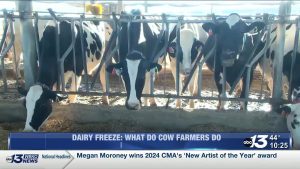As a result, the flush season (typically from October to March), which sees higher milk output production, stretched into April and May, leading to a two-month oversupply.
Households consumed more milk, cheese and yogurt during the lockdown, raising sales by up to25% in large dairies, such as Amul. But that has not been enough to offset the sharp decline in demand from commercial buyers, such as hotels, confectioners and restaurants, which account for nearly 20% of the organised dairy sector’s revenues.
This has triggered an inventory build-up crisis.
This year should have been a bright one. Good rains during winter made for cheaper fodder, the key input for cattle. As a result, the flush season (typically from October to March), which sees higher milk output production, stretched into April and May, leading to a two-month oversupply.
A limping hospitality sector, however, has cut sales in the last two months, analysts say. Revenue from ice-cream, cheese, flavoured milk, curd and yoghurt, among other items, which give higher profits than liquid milk, have tanked. Processed dairy items make up a third of the organised dairy sector’s revenues.
The effects of a revenue crisis in larger dairies ultimately ripple into smaller ones, who, on cue, pass on lower prices to unorganised farmers.
India is the largest producer of milk in the world. In the past four years, output has grown by over 6% every year. Production is expected to be 177 million tonnes in 2019-20. Nearly 70 million rural households are occupied in dairy farming, which gives a regular income, unlike the seasonal earnings from crops.
From a dairy owner’s perspective, the more lucrative sales come from what is internally called the ‘Horeca’ segment, an industry acronym for ‘hotel, restaurant and canteen’ sales. “Dairies in which commercial sales to the hospitality sector have a larger share have taken a larger hit of the lockdown,” said Abhishek Agrawal of Comtrade, a commodities trading firm.
Inventories could rise by 14% in the first quarter, which is usually a peak season, according to Crisil Ratings, the credit ratings firm.
Amul, the country’s largest milk brand, said its value-added segment, such as ice-cream, yogurt and cream, account for 20% of overall sales. “During the two months of lockdown, sales in this segment became zero. They have now revived a little, say about 15%,” said RS Sodhi, the managing director of Amul, a brand owned by the Gujarat Cooperative Milk Marketing Federation Ltd (GCMMF).
Amul has been lucky because household sales have just about made up for falls in hospitality and commercial sales. The brand’s owner, GCMMF, said it has not reduced procurement prices ,ie, prices the dairy pays to farmers. However, thousands of unorganised, smaller farmers are already counting huge losses in states such as Punjab and Madhya Pradesh.
In Madhya Pradesh, cooperatives have slashed wholesale milk prices to dairy farmers from ~7 a litre of milk to ~5.20, squeezing margins, said Kedar Sirohi, an Indore-based farm leader. “Small farmers who sell lower volumes have gone out of business,” he said.
In April, there were reports of farmers from Kerala and Karnataka dumping milk on to roads because they were being offered too little for it.
Analysts say a year of pain lies ahead. Demand of processed items are expected to “de-grow” 2-3% this fiscal year, according to Rahul Guha, a dairy business watcher and a director at Crisil Ratings. “That would reduce operating profitability by as much as 50-75 basis points.” One basis point is one-hundredth of a percentage point.

















